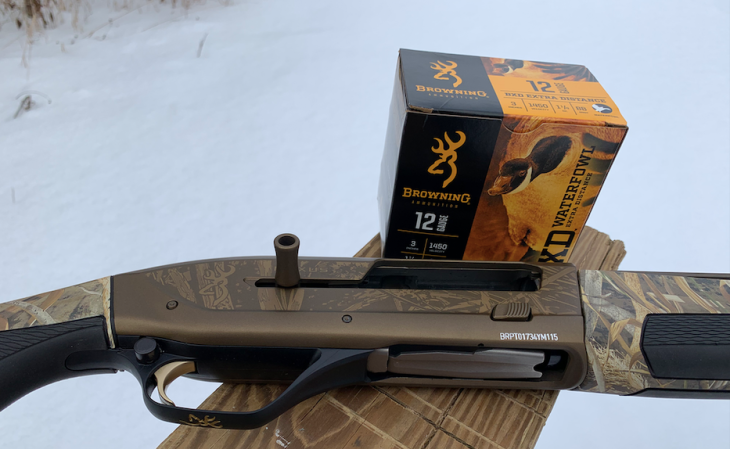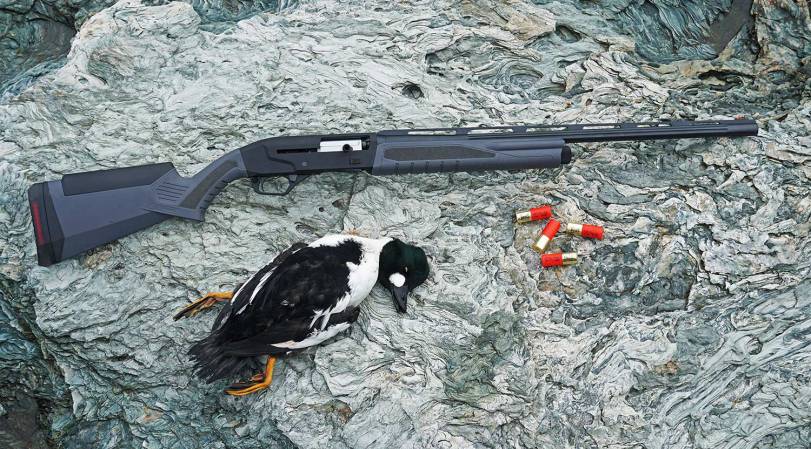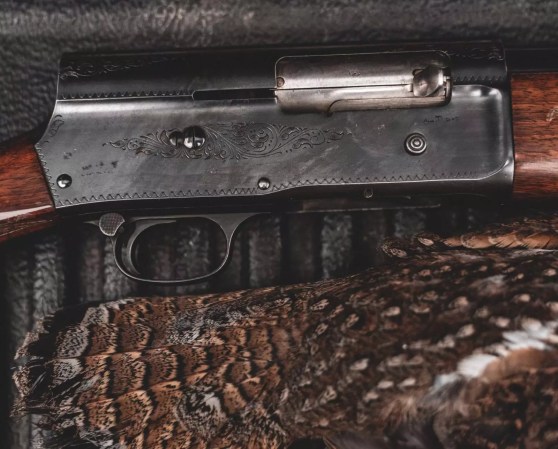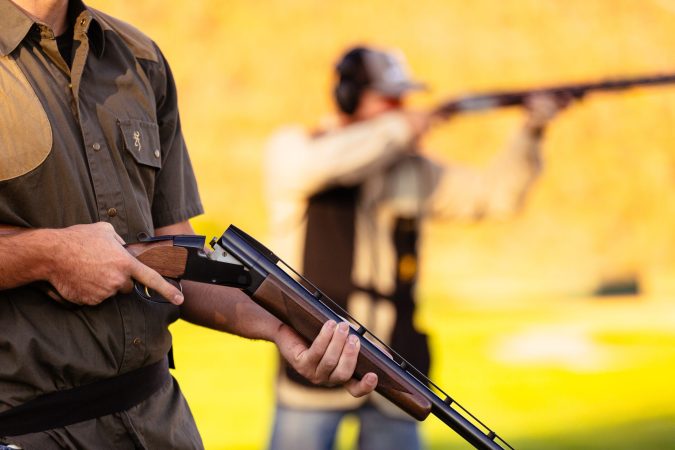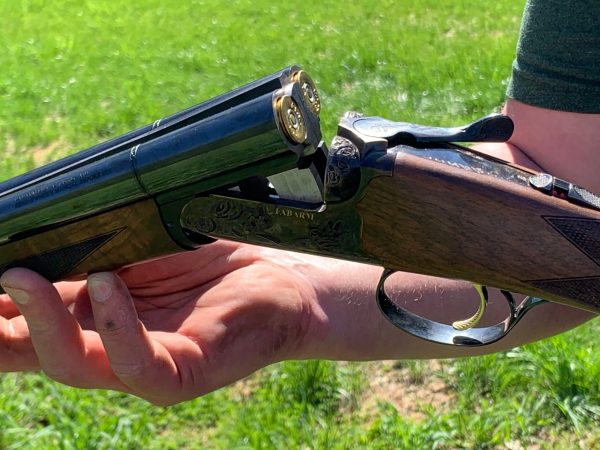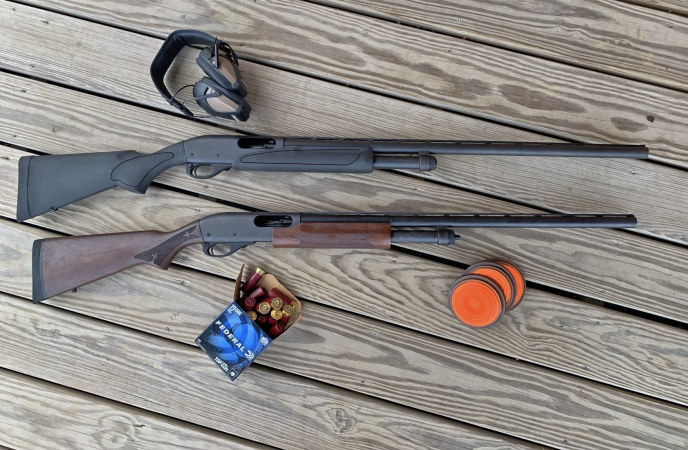We may earn revenue from the products available on this page and participate in affiliate programs. Learn More ›
If you want to get an ugly look from a duck hunter or competitive clays shooter, ask if they want more recoil added to their shotgun. The answer will be a resounding “no.” That’s because recoil is unpleasant. And those of us who shoot shotguns with regularity know that fact all too well—we have the bruised shoulders to prove it.
But it’s likely that you don’t know everything there is to know about recoil. Sure, it stings your shoulder, but you can predict the amount of free recoil a shotgun will produce with specific shotshells by using a simple mathematic formula. There are also different kinds of recoil and many variables that can either increase or decrease the amount of kick your shoulder soaks up after pulling the trigger.
The Two Types of Recoil

There are two kinds of recoil shotgunners care about. The first is the free recoil that the mathematic formula gives us. The second is the perceived recoil (aka felt recoil), which is the cause of a swelled cheek and sore shoulder (i.e. the recoil you feel). They are different, but free recoil is directly related to perceived recoil.
While there are several free recoil formulas, I like the one from powder maker Hodgdon. It includes the weight of the gun, the weight of the ejecta (shot, wad, and powder), and the speed of the ejecta.
The formula for recoil energy in ft./lbs. is (Bw Mv + 4,700 Pw)2 / (64.348 Gw) where: Bw = weight of the ejecta (shot and wad) in pounds; Mv = muzzle velocity in feet per second; Pw = powder weight in pounds; and Gw = the weight of the gun in pounds. If you have an aversion to math, let the electrons do the work by going to the this website. Plug in the weight of the gun, plus the weight and velocity of the ejecta, and you get the amount of free recoil. Other free recoil formulas may differ slightly by treating the jet effect of the escaping gas differently, but you are in the ballpark.
How Free Recoil Is Measured
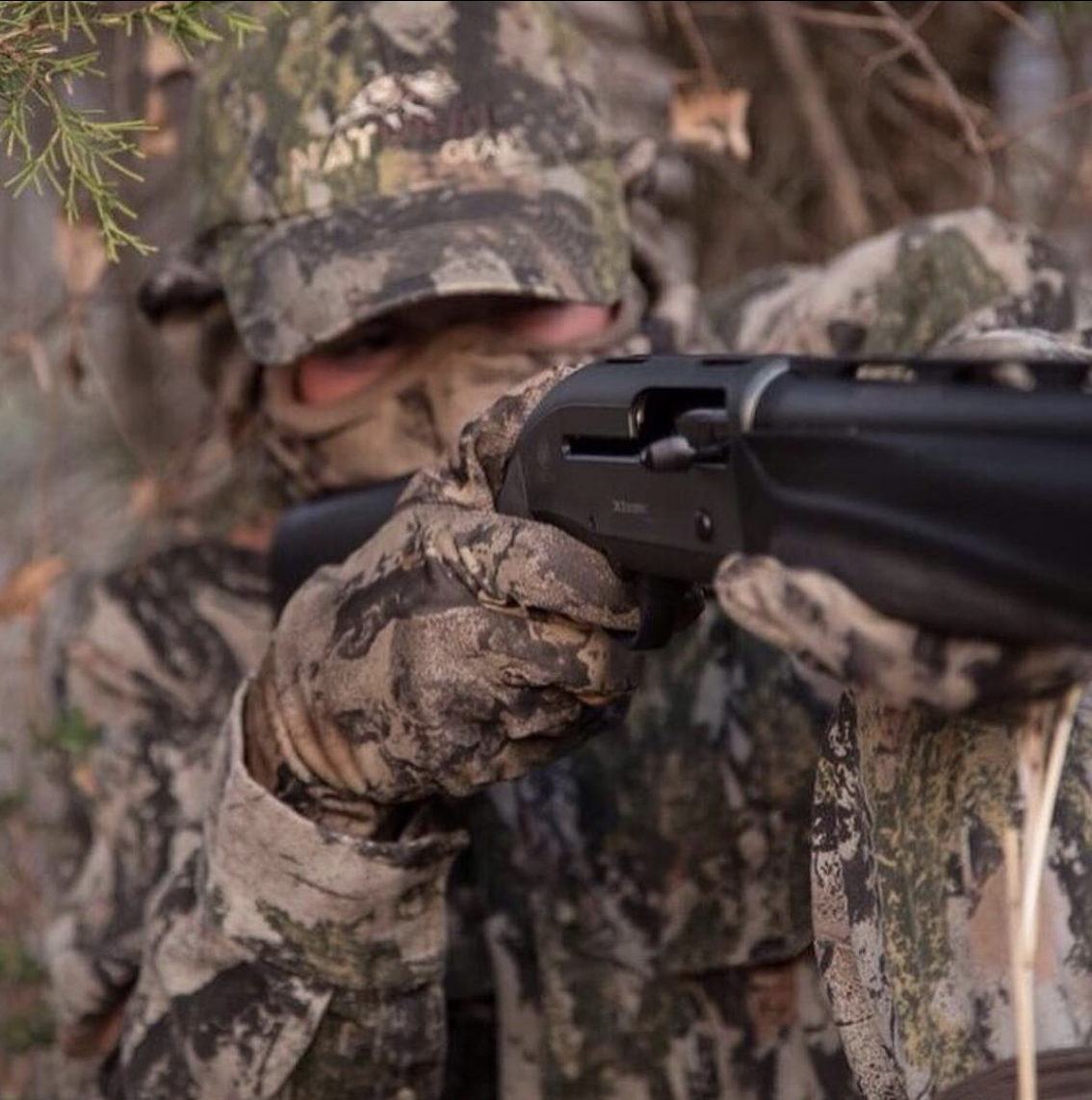
So, what happens to free recoil when you change the weight of the gun? I’ll cite target shotgun weights and shells, but the numbers hold true for game guns as well. Let’s take a standard 3-dram (dram refers to the equivalent amount of black powder—which has been replaced by smokeless powder—it takes to produce a shotshell’s velocity) 1,200 fps 1⅛-ounce target load and look at how much free recoil is produced relative to gun weight.
- Shotgun weight: 8 pounds
- Free recoil: 20.3 ft./lb.
- Shotgun weight: 8½ pounds
- Free recoil: 19.1 ft./lb.
- Shotgun weight: 9 pounds
- Free recoil: 18 ft./lb.
You can see that increasing gun weight by 10% will lower recoil by around 9%. There are numerous products, like Fabarm’s Kinetik stock insert, which will allow you to add weight to a shotgun and negate more free recoil. Just be aware that you will also alter the balance of the gun.
Changing the muzzle velocity of your shotshell will have an even bigger effect on free recoil. Let’s use an 8-pound shotgun as our variable.
- Shotshell: 1⅛-ounce, 1,200 fps
- Free recoil: 20.3 ft./lb.
- Shotshell: 1⅛-ounce, 1,145 fps
- Free recoil: 18.7 ft/lb.
- Shotshell: 1⅛-ounce, 1,080 fps
- Free recoil: 16.8 ft./lb.
It’s the same with the payload. Lowering the charge weight 11% from 1⅛- to 1-ounce with velocity remaining at 1,200 fps, will reduce free recoil just over 17%. Reducing both speed and shotload really pays off. If you go from a 1,200 fps 3-dram 1⅛-ounce shotshell to a 1,145 fps 2¾-dram 1-ounce load, your recoil drops 24%. Reducing free recoil is more efficiently done by changing the shell than it is by adding weight to the gun. Sub-gauge shells can lower recoil even more, but the guns are usually lighter, which adds some back.
Tighter Chokes Produce More Free Recoil
Choke can affect free recoil by altering shot speed. Depending on the shell and barrel, shot going through a full choke may be as much as 50 to 70 fps faster than the same load in a cylinder choke barrel. That’s due to the Venturi effect. When energy remains the same, the velocity of a fluid passing through a restricted area will increase. Tighten the nozzle of your garden hose and the stream goes further and faster although water pressure remains the same. In a shotgun, the difference between cylinder and full choke can be the difference in speed between a 2¾-dram load and a 3-dram. More speed equals more free recoil.
Perceived Recoil Is Subjective

The free recoil formula could care less about barrel porting, forcing cones, overbores, aftermarket stocks, gas actions, and recoil pads. Perceived recoil is different. Perceived recoil is the kick you feel once the firing pin strikes the primer and ignites the shotshell’s powder (it’s not mathematically calculated like free recoil). An example—that you should not ever try—of perceived recoil would be shooting your gun from the shoulder as you usually do and then taking the next shot with the buttstock resting against the tip of your nose. Free recoil stays the same, but perceived recoil will certainly be different.
Proper stock fit is one of the best ways to reduce perceived recoil, such as face slap (the stock recoiling backwards against your cheek). A stock that is too short will be held loosely in the shoulder and will smack you when it travels back on recoil. A stock with too much cast or outward bend of the stock will do the same. Proper cast helps you align your eye with the barrel, but too much causes face slap because the stock doesn’t recoil straight back to slide along your face. It slides into it. Incorrect stock height can also increase perceived recoil for the same reason. A straighter stock can help with head alignment and thus recoil. That said, field guns need more drop at heel than at comb because game shooting requires varied head placement during quick mounts on high and low shots. The result is a bit less comfort, but a lot more dead birds.
The way that you hold the gun can affect perceived recoil. A very firm grip will keep the gun from recoiling into your shoulder as much, but it can make the gun more difficult to swing smoothly. Also, firmly cheeking the gun will offer more consistent shot placement but could increase face slap if fit and shooting stance are incorrect. A light cheek mount is less consistent but can be less painful. Look for the happy medium.
One of the most popular remedies for perceived recoil misery is the gas-operated auto-loader. Of course, they don’t lower calculated free recoil at all. The free recoil formula isn’t concerned whether your action is gas- or inertia-driven. But a gas auto does significantly lower perceived recoil because it spaces the recoil out over a longer period of time (remember that the next time a gun manufacturer lauds its auto-loader for how fast it cycles). You get more of a push than a poke. Recoil-operated autos without a gas action cycle so quickly that you don’t get this advantage. If you were to graph the recoil of a gas gun versus an over/under, the curve of the O/U would resemble a cone because the recoil arrives all at once. For the gas gun of the same weight using the same shell, the recoil curve is more drawn out and less high. The areas underneath the curves are the same, but delivery timing isn’t.
Read Next: Benelli vs. Beretta: Which Italian Shotgun Maker Is Your Favorite?
Slowing Recoil Down Makes It More Tolerable
Rubber recoil pads and aftermarket stocks like TSK , G-Square, Gra-Coil and others work the same way. They stretch out the inevitable, they don’t eliminate it. Rubber recoil pads compress under recoil and space it out a touch. Aftermarket stocks with interior springs or pneumatic tubes can space it out more because they compress more. As with the gas gun, it’s the same calculated free recoil, but it doesn’t seem as bad because it is spread out over a longer period of time.
Barrel modifications such as porting, overboring, or lengthened forcing cones are often advertised as lowering recoil. Some shooters do feel that they help. Others aren’t so sure. Overboring or backboring by enlarging the interior diameter of the barrel can increase velocity very slightly by lowering friction. But as I’ve already said, increasing velocity increases free recoil.
Porting is different. Barrel porting in a rifle does reduce perceived recoil. But rifles aren’t shotguns. A rifle has a thick barrel which gives the escaping gas something to push against. And rifle barrel pressures are much higher than those in a shotgun. So, barrel porting may slightly reduce perceived recoil in shotguns, but not by much. Vertical shotgun barrel porting, like Mag-na-port, may help a bit with face slap because it could lower muzzle jump slightly.
Some will argue reloading shotshells with a slower burning powder will reduce perceived recoil compared to using a fast-burning powder because it extends the duration of recoil. That’s still up for debate. I once ran a test using reloads of the same velocity loaded with fast burning Red Dot powder and slower burning Unique. None of the testers could sense any difference. Not surprising, because the different burn rates were measured in milliseconds and most shooters aren’t capable of noticing such a small change.

